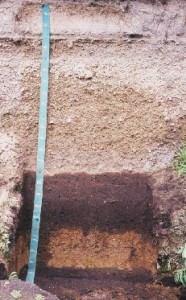 CRISP devote special attention to the soil in terms of its cultural heritage value and living testimony of the past. Related to this soil function, CRISP carried out, among its activities, both pedoarchaeological research and the production of soil monoliths for museum exhibitions.
CRISP devote special attention to the soil in terms of its cultural heritage value and living testimony of the past. Related to this soil function, CRISP carried out, among its activities, both pedoarchaeological research and the production of soil monoliths for museum exhibitions.
The pedoarchaeological research studies the genesis, properties and characteristics of soils from the past to:
– reconstruct the environment in which man has lived;
– to understand the environmental changes that ancient communities have caused
– to analyze the archaeological record;
The pedoarchaeological research involves field survey, physical-chemical and micromorphological analysis, areal integration of archaeological and soil data.
In detail, the micromorphological analysis by soil thin sections, allowing the microscopic investigation of undisturbed soil samples, is able to successfully respond to the many archaeological questions.
The pedoarchaeological research is currently focused on prehistoric sites of so-called facies of Palma Campania (Early Bronze Age), buried and well preserved by the pyroclastic deposits of Pomici di Avellino Vesuvius eruption (3945 cal yr BP).
With the production of soil monoliths CRISP aims to collect and preserve the main representative soils of the Campania Region and Italy in order to display them in museum exhibitions.
In fact soil monoliths supported by soil and environmental data and are an useful tool to create soil awareness, so much important for preserving our ecosystems.
Soil monoliths procedure consists of several and complex phases. Breafly:
- Selection of the soil to collect the most rappresentative pedon of the site
- Soil profile sampling. The soil profile is collected from the pit in large wood boxes (150x28x10 cm or 180x28x10), previously waterproofed.
Packing and transport must be carefully carried out, not to damage soil profile collected.
- The dried soil profile is subjected to impregnation using a range of resins.
- After hardening, the box is taken out. The soil profile impregnated is subjected to further processing for finishing. Then it is ready for mounting and display, completed with pictures, information and data depending on the target audience.
CRISP has contributed to the SOIL MUSEUM of Pertosa (Salerno) – the first permanent soil museum in Italy. More specifically CRISP has produced soil monoliths from four different pedo environments in Campania: Casal di Principe (CE), Monteforte Irpino (AV) , Celle di Bulgheria (SA), Guardia Sanframondi (BN)


 Italiano
Italiano